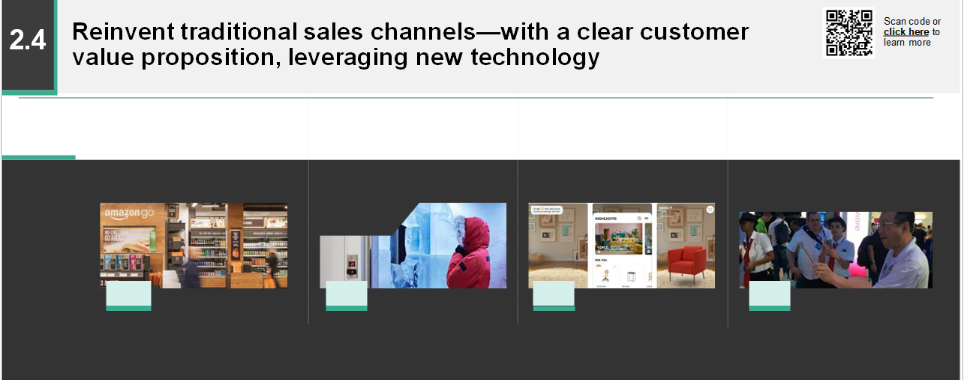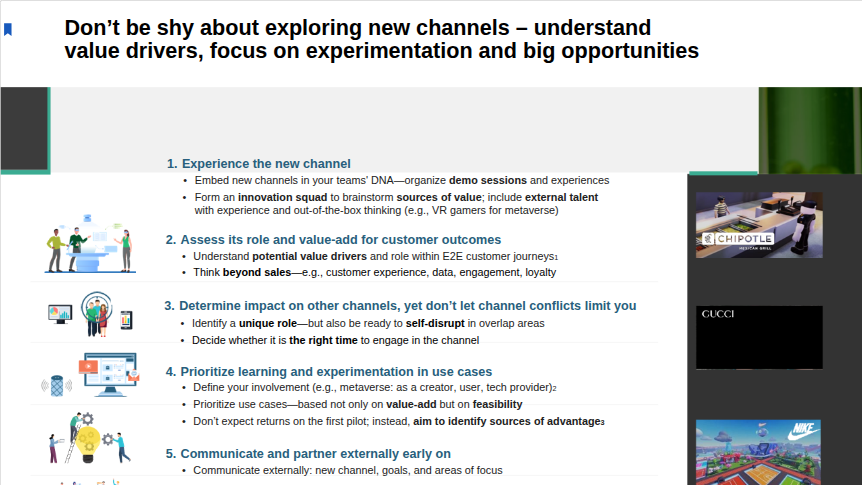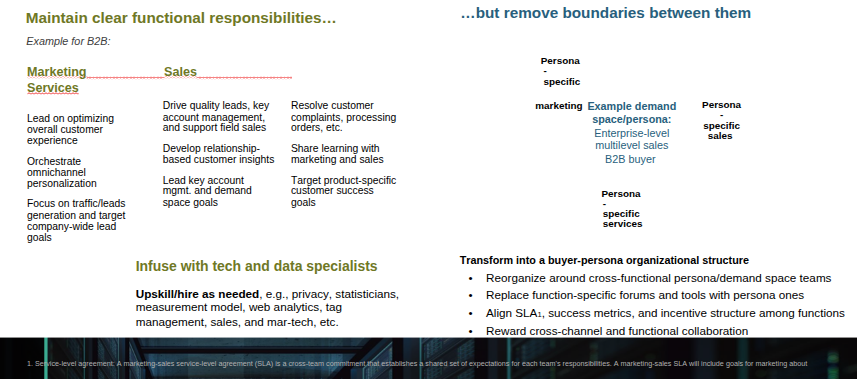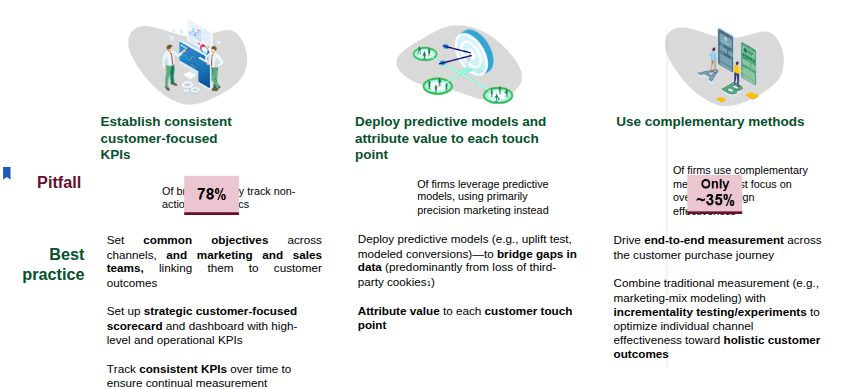

The future of sales and marketing is here
| 1 | TRENDS | The pandemic has permanently increased time spent online and brought new digital users, accelerating e-commerce growth Customers now expect hyperpersonalization, ultraconvenience, augmented experiences, community connection, and sustainability Across B2B and B2C, new sales channels are emerging that are geared toward remote, voice, gaming, and social As a result, the role of traditional sales channels is shifting toward convenience, entertainment, immersion, and personal touch At the same time, technological innovation is fueling this exponential change: AI, AR/VR, the metaverse, NFTs, crypto Yet, privacy concerns & 3P cookies phaseout present a challenge, prompting a focus on zero- & first-party data and data partnerships | |
| 2 | IMPLICATIONS FOR LEADERS | Leverage deep customer insights—demographics, needs, context—to develop and prioritize meaningful demand spaces Optimize and personalize each micro-moment of interaction across channels—to win the ever-intensifying “attention wars” Revisit your channel strategy—focus on a seamless integrated experience across channels matching individual preferences Reinvent traditional sales channels—with a clear customer value proposition, leveraging new technology Don’t be shy about exploring new channels—emphasize experimentation, understand value drivers, and focus on big opportunities Kill boundaries between marketing, sales, and services and infuse new talent—to spark innovation and drive cross-channel success Combine data and tech capabilities—to allow for a single customer view across teams and end-to-end engagement Redefine the measure of success—shifting from channel to customer-first perspective; deploy holistic rigorous ROI measurement |
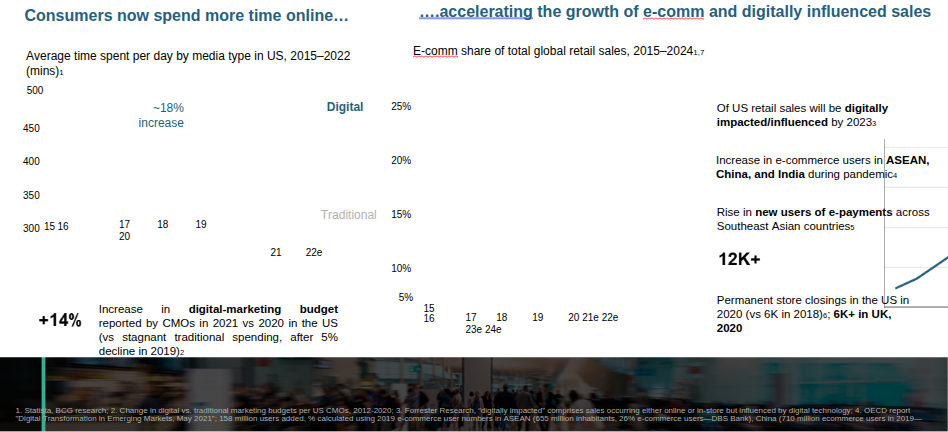
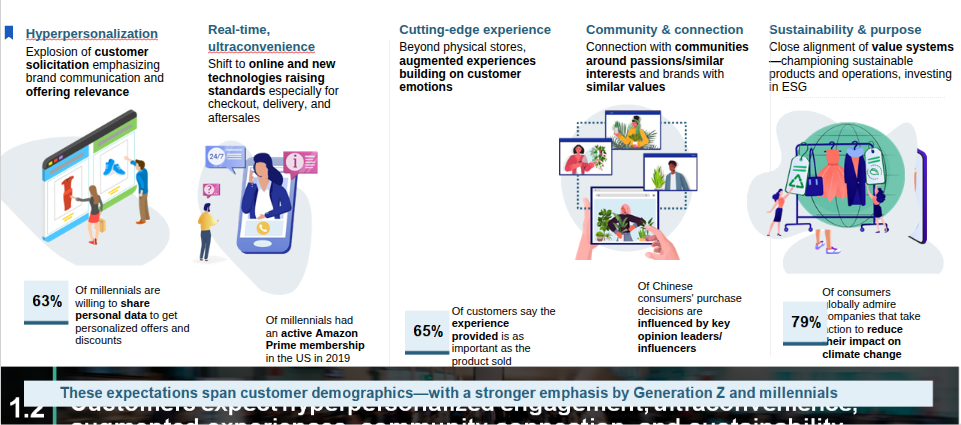
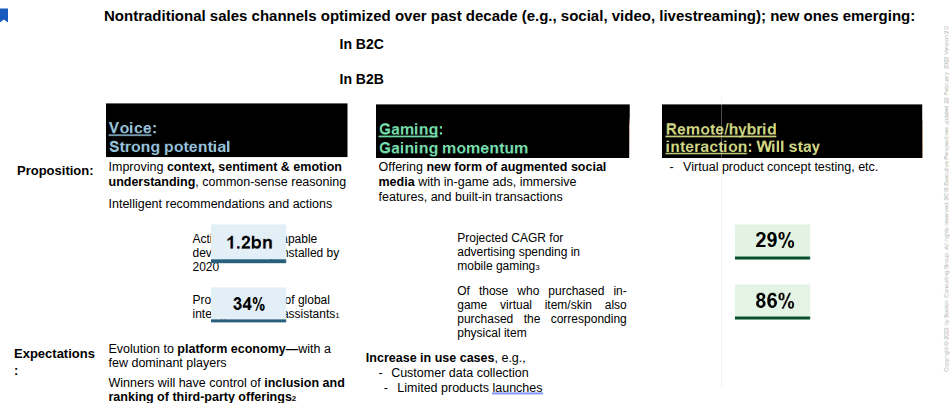
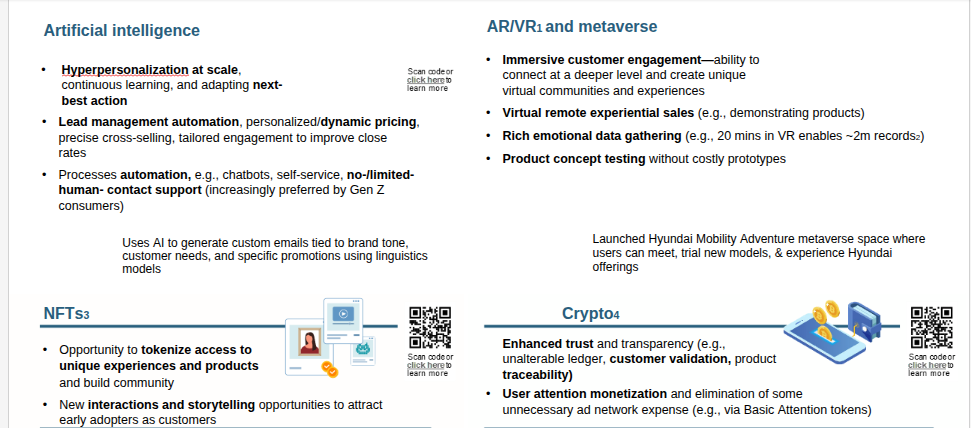
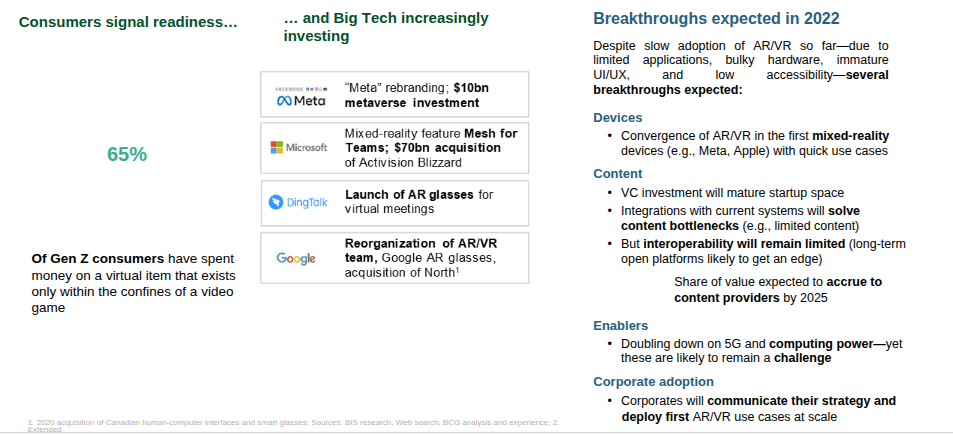



2.1 Leverage deep customer insights—demographics, needs, context—to develop and prioritize meaningful demand spaces
Scan code or click here to learn more
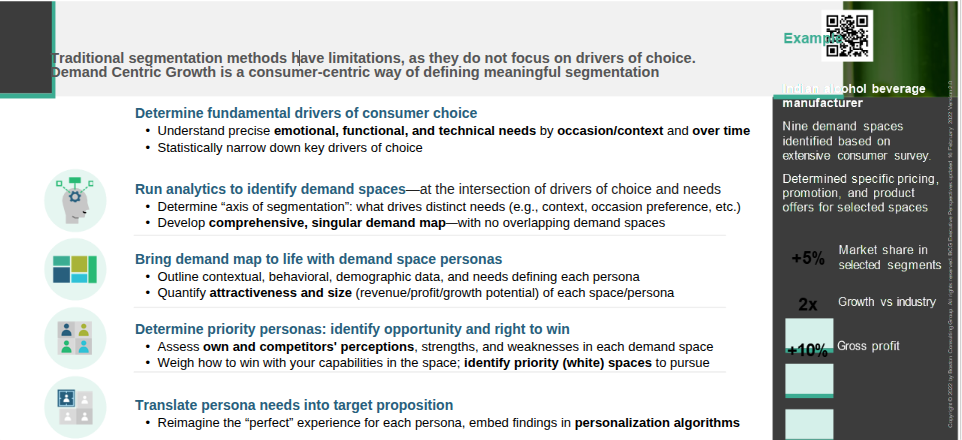
Optimize and personalize each micro-moment of interaction across channels—to win the ever-intensifying “attention wars”
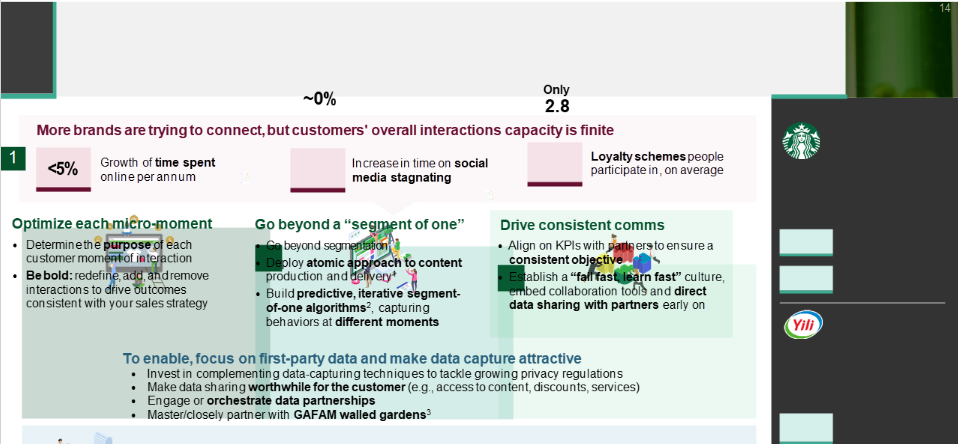
2.3 Revisit your channel strategy—focus on a seamless integrated experience across channels matching individual preferences
Understand channel interplay
- Determine the value of each channel, including second-order effects, e.g., brand impressions, loyalty, community
- Analyze how channels work together
Build seamless cross-channel interfaces
- Deploy customer-first view (rather than channel-specific objectives)
- Allow for delineated customer experiences, preparing for multiple new touch points
Continually experiment and adapt
- Ring-fence budget for granular customer research to explore the art of the possible
Define role and tailor proposition of each channel
- Determine best channel fit for each customer and part of their journey (e.g., based on buying patterns, preferences, needs)
- Leverage new channels to enhance discovery and inspiration; innovate parts of the journey (e.g., customer care via voice/VR)
- Consider blurring the lines—e.g., voice/gaming/AR in stores
Enable smooth cross-channel transition
- Revisit product mix and pricing in each channel
- Recognize supply chain implications, invest in multi- directional product flows, integrated stock management, etc.
- Break functional siloes and align KPIs, incentives, and remuneration to limit channel conflicts (see pages 18-20)

Realign role of channels to the new reality—consistent with our cross-channel strategy. Prioritize one or two of the following functions.
Reinvent traditional channels
Target use of new tech
Ultraconvenience
Use dense network of smaller stores
Shrink delivery time (e.g., restaging inventory, drop-off lockers, drones, curbside pickup, 3PL deliveries)
Consider near-real-time product manufacturing and dematerialized formats (e.g., instant book download)
Product touch and feel
Focus stores on products whose qualities cannot be reduced to specs on a web page
Improve digital display using advances in browser technology
Explore haptic technology,
recreating conditions of product uses
Immersive exploration
Build experiential capabilities— e.g., retail as entertainment, gaming, mixed reality
Fast-track AR and VR through rapid test-and-learn cycles
Personal and trusted advice
Refocus stores on services
difficult to replicate remotely
Enhance customer recognition across channels to ensure high- quality, personalized advice
Explore investing in bots and automated advisory powered by NLP2 and “AI empathy”
